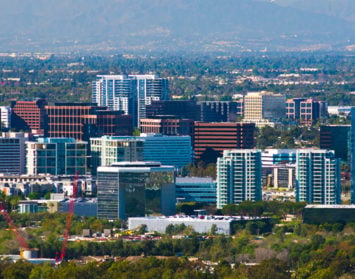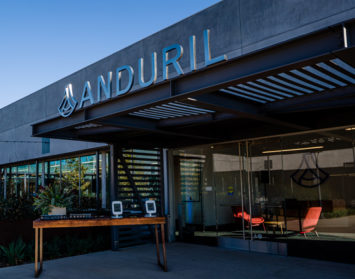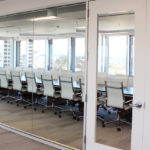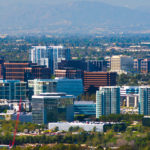By Tucker Hughes
Don’t get too excited yet, the Orange County commercial real estate market is still a landlord’s market. Strong employment growth from a diversified employment base is fueling demand, but a lack of existing inventory in an already-tight market chokes tenants’ optionality, continuing to push rental rates upward.
Developers Are Back
With strong tenant demand and rising rental rates, the math is fueling the developer’s arms race to build new product as quickly as possible. In fact, 2017 marks the first time since 2008 that we’re seeing over 1 million square feet of new development scheduled to be delivered on an annual basis. One notable difference between 2008 and 2017 development trends is that the vast majority of new construction currently underway is being built on speculation, i.e., without a large anchor tenant to securitize the building, as was the case during the last construction cycle.
Local real estate behemoth Irvine Company has been extremely active, adding hundreds of thousands of square feet of new product to their portfolio this year. The success of its new office tower at 200 Spectrum Center Drive prompted Irvine Company to fast track construction of its neighboring sister tower–400 Spectrum Center Drive–the speculative 425,000 square foot crown jewel of the Irvine Spectrum office market. With limited optionality for larger blocks of space (30,000+ sq. ft.), larger tenants’ focus immediately shifted towards 400 Spectrum Center and recently secured Irvine-based cybersecurity firm Cylance for a 133,000 sq. ft. long-term lease. Construction on Sand Canyon Business Center, Irvine Company’s two-building, 210,000 sq. ft. mid-rise project, was completed earlier this year, which was delivered 70% preleased to Cavium for 105,000 sq. ft. (relocating from Aliso Viejo) and Auto Gravity for 40,000 sq. ft.
Construction is underway at The Quad, Irvine Company’s 370,000 sq. ft., four-building extension and the next installment of Discovery Business Center, is well underway with interest, but no anchor tenants to secure the space as of yet. In Irvine, Trammell Crow is near completion of its 537,000 sq. ft. speculative development building, The Boardwalk, which has generated significant interest from prospective tenants, but has yet to lease any large block of space. Flight, Tustin Legacy’s 870,000 sq. ft. creative office campus, a massively ambitious mixed-use project that has hit stop and go for several years, broke ground this month and will undergo a 15-month construction phase delivering Q3 of 2018.
Growing, But Not As Fast
Through Q2 we witnessed the broad-based recovery in full swing throughout Orange County, with strong fundamentals and a diversified employment base led by growth in the technology, financial and business services industries. Average countywide office rental rates touched $2.36 per rentable square foot (on a Full Service Gross Asking Rent basis), up 3.3% from 2016, which saw an increase of 5.7% from 2015, with positive net absorption increasing .3% YTD from the prior year, an absorption rate appreciation slowdown from 1% annually the prior two years, and a vacancy rate hover flat at 9.1%. On the industrial front, Orange County’s industrial market is even tighter, with no new product slated for delivery this year and an astonishingly low 2.2% real-time vacancy rate. Over the next 12 months, rents are projected to increase across all product types, including 5.7% rate growth for office and 10% for industrial product types countywide.
Orange County has one of the lowest unemployment rates in the country, which paradoxically, makes it extremely difficult for employers to find highly qualified talent as the candidate hiring pool continues to dwindle. With a local population growing annually at 2.5% and baby boomers exiting the work force in troves, which in turn is lowering the employment participation rate, it’s the force behind the slowdown in employment growth we’ve seen for the past two quarters.
Positive net absorption (i.e., companies are expanding and leasing more space), appreciating rental rates (the law of supply and demand, low supply and high demand means higher rental rates) and new construction (coupled with developers’ confidence in the future) are all market positives, so why is the outlook only cautiously optimistic? Despite “up and to the right” momentum, a closer look reveals that the rate of growth, while positive, is actually slowing on an annual basis, possibly showing signs of weakness. To boot, the amount of available sublease space has recently begun trending above the five-year average (hovering at 2.3 million square feet or 1.75% of total inventory), simultaneously staying on the market for longer periods of time. Historically, the amount of available sublease inventory has been an indicator of the general health of the local economy, with more available sublease space being indicative of weaker economic growth. Companies deciding to sublease their space isn’t necessarily a negative indicator, as companies realize they’ve outgrown their current space and need to move into a larger space to accommodate their growth. On the other hand, it can be a troubling sign as companies put their unneeded space on the market for sublease when they no longer need all of the space they currently occupy, typically due to some sort of financial strain (e.g., they miss projections, don’t get anticipated funding, mistime a product to market, revise growth/headcount projections, etc.). When more sublease space is available and it sits on the market for longer periods of time, this typically means that more and more companies are scaling back, and in the aggregate often indicates a weakening local economy.
Is this the canary in the coal mine signaling turbulent times ahead? We’ll keep a close watch over the next several months to see if a trend is emerging or just a coincidence we’ve already moved on from.
Tucker Hughes is managing director at Hughes Marino, a global corporate real estate advisory firm that exclusively represents tenants and buyers. As head of Hughes Marino’s Orange County and Los Angeles offices, Tucker specializes in tenant representation and building purchases throughout Southern California. Tucker makes frequent media appearances to speak on the future of commercial real estate, and is also a regular columnist for Entrepreneur.com. Contact Tucker at 1-844-662-6635 or tucker@hughesmarino.com.











